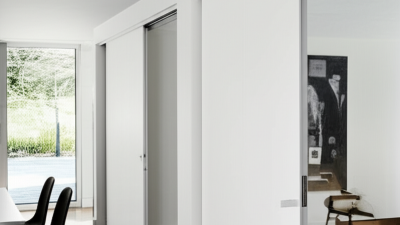10 Essential Tips for Choosing the Right Fire Rated Doors for Your Building
When it comes to ensuring the safety and security of a building, one critical element that often goes overlooked is the selection of fire rated doors. These doors not only serve as physical barriers but also play a vital role in delaying the spread of fire and smoke, potentially saving lives and property. With an abundance of options available in the market, choosing the right fire rated doors can be a daunting task. Therefore, understanding the essential factors involved in this selection process is paramount for architects, builders, and property owners alike.
This article presents ten essential tips to guide you in choosing the best fire rated doors for your building. From compliance with local regulations to understanding the fire resistance ratings, each tip aims to provide valuable insights that will aid in making informed decisions. By focusing on the critical aspects of fire rated doors, you'll be better equipped to ensure the safety of your space while meeting architectural and functional requirements. Whether you're involved in new construction, renovations, or upgrades, these guidelines will enhance your ability to navigate the complexities of fire safety in the built environment.

Key Fire Rating Standards to Consider for Door Selection
When selecting fire-rated doors for commercial buildings, understanding key fire rating standards is crucial for ensuring safety and compliance. The National Fire Protection Association (NFPA) outlines several rating classifications pivotal in door selection, including the duration of resistance to fire, measured in minutes.
For example, a door rated for 30 minutes is suitable for areas where a quick evacuation is essential, whereas a 90-minute door might be required in facilities with higher fire risks, such as hospitals or laboratories.
 Additionally, the Underwriters Laboratories (UL) provides comprehensive testing criteria, including the door’s performance under heat exposure and the integrity of its structure. Their tests classify doors into categories based on their ability to withstand flames and prevent smoke spread.
Additionally, the Underwriters Laboratories (UL) provides comprehensive testing criteria, including the door’s performance under heat exposure and the integrity of its structure. Their tests classify doors into categories based on their ability to withstand flames and prevent smoke spread.
As per their reports, over 90% of fire-related injuries are a result of smoke inhalation rather than flames, underscoring the importance of selecting doors that not only meet fire resistance but also minimize smoke leakage. Understanding these standards helps building owners make informed choices that align with both safety regulations and operational needs.
Material Choices: Wood, Steel, and Composite Fire Rated Doors
When choosing the right fire rated doors for your building, material selection is crucial. The most common options are wood, steel, and composite materials, each offering distinct advantages. Wood fire rated doors, while aesthetically pleasing and offering good insulation, require proper maintenance to ensure their longevity and compliance with fire safety standards. On the other hand, steel doors provide excellent durability and resistance to high temperatures, making them an ideal choice for commercial applications. They are less susceptible to warping and are often equipped with additional fire-resistant features.
Composite fire rated doors combine the best attributes of both wood and steel. These doors are engineered to offer high performance against fire while being lightweight and easy to install. Moreover, they often come with a variety of finishes, giving designers flexibility in aesthetic appeal. As the demand for fire rated doors continues to rise, particularly in India's burgeoning door market projected to reach a substantial valuation by 2033, understanding the benefits of each material will empower builders and consumers to make informed decisions that enhance safety and functionality in their structures.

Understanding the Importance of Door Hardware Compatibility
When selecting fire-rated doors for your building, it's crucial to consider door hardware compatibility. The hardware used on a fire-rated door must meet specific fire protection standards to ensure the door functions effectively during an emergency. This includes hinges, locks, and panic hardware, all of which should be tested to work seamlessly with the fire-rated door's features. Choosing compatible hardware not only upholds safety requirements but also contributes to the door's overall performance and longevity.
In addition to hardware compatibility, you should prioritize the fire rating itself, which indicates the amount of time a door can withstand fire exposure. It's essential to assess the rating needed based on the occupancy and layout of your building. Furthermore, assess the materials used in both the door and hardware; for example, steel hardware is often more suitable for high-traffic and high-risk areas due to its durability.
Lastly, consult with fire safety professionals to ensure that all components comply with local building codes and regulations, providing additional assurance that your selections contribute positively to the safety of your occupants. Remember, investing in the right doors and hardware can significantly enhance fire safety in your building.
Evaluating Fire Door Aesthetics and Building Design Integration
When selecting fire-rated doors, aesthetics and building design integration are crucial aspects that often get overlooked. These doors must blend seamlessly with the overall architectural style while still fulfilling their primary function of safety. It is essential to evaluate the materials and finishes of the fire doors to ensure they align with the building's design theme.
Consider choosing doors that offer customizable aesthetics, such as various colors and textures that can complement the existing design elements.
Furthermore, the placement of fire-rated doors should also enhance the visual flow of the space. Incorporating them into natural sight lines can create a more cohesive appearance, while strategic positioning can maintain the building's architectural integrity. Additionally, look for options that provide glass inserts or vision panels, which not only contribute to visibility but also allow natural light to penetrate the space. By prioritizing design integration, fire-rated doors can serve as functional safety features without compromising the overall aesthetic appeal of a building.
Cost Considerations: Balancing Quality and Budget for Fire Rated Doors
When selecting fire rated doors, cost considerations play a pivotal role in ensuring both safety and budget adherence. It's essential to strike a balance between quality and expenditure. Investing in high-quality fire rated doors typically means enhanced protection, but it’s vital to analyze the long-term return on investment. Cheaper alternatives may seem attractive initially, yet they might not provide the necessary fire resistance, potentially putting lives and property at risk.
One crucial tip is to assess the specific fire rating requirements for your building. Different properties have varying needs based on occupancy, building materials, and regional codes. This understanding can help you avoid overspending on features that are not necessary for your specific situation. Another essential factor is to evaluate installation costs, as professional installation can significantly impact the overall expense. Cutting corners here could compromise the doors' effectiveness, negating any initial savings.
Lastly, consider sourcing from reputable manufacturers. High-quality doors may carry a higher upfront cost, but they often offer durability and reliability that cheaper options lack. Take the time to review warranties and certifications, ensuring that the doors you choose meet industry standards, which ultimately supports both safety and budget-efficiency in the long run.
Related Posts
-

7 Best Fire Rated Doors for Ultimate Safety and Security
-

Ultimate Guide to Seamless Bifold Door Installation for Your Home
-

Unlocking Space with Pocket Doors Interior in Modern Home Design
-

Exploring the Growth of Pocket Doors Interior Market at the 138th China Import and Export Fair 2025
-

Why Modern Interior Doors Are Essential for Enhancing Home Value and Aesthetic Appeal
-

Transform Your Space: The Ultimate Guide to Choosing the Perfect Sliding Door System



